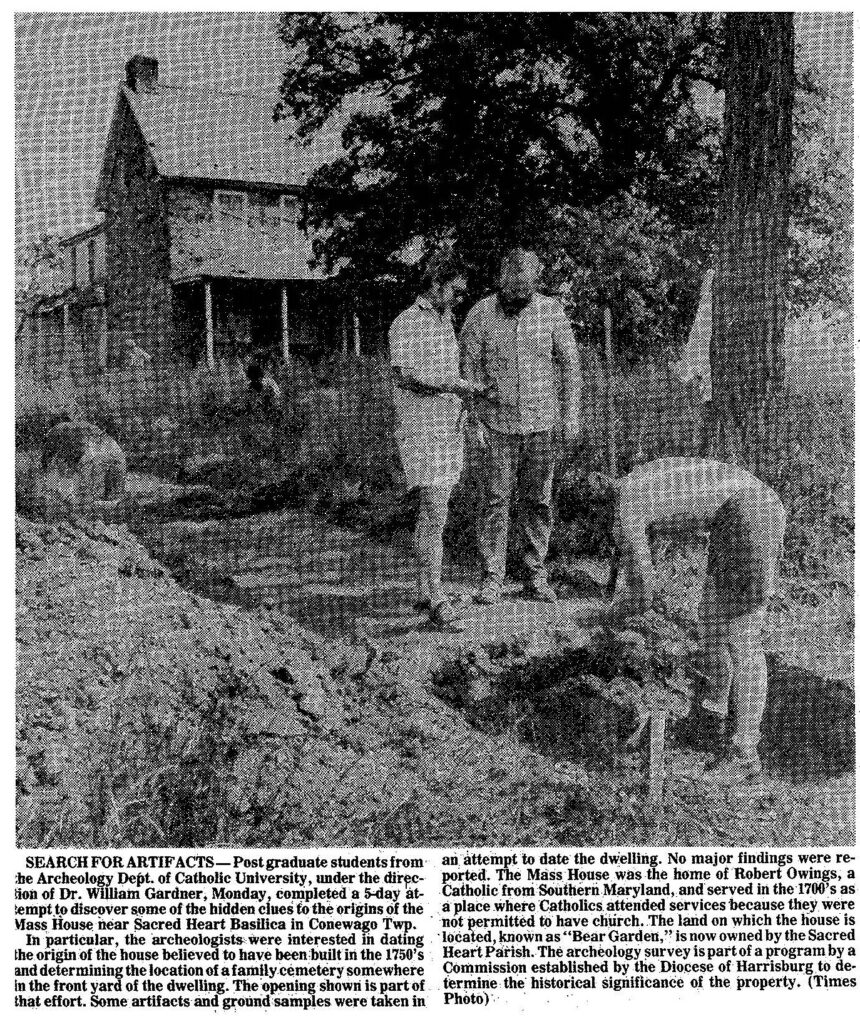Conewago & Paradise
PENNSYLVANIA
In 1742, Rev. William Wappeler warranted 141 acres of land, which became the core of the property known as Conewago. An additional 50-acre parcel was warranted in 1762, and 750 acres of land were purchased in 1776. By the mid-nineteenth century, the property was 632 acres. Paradise, a roughly 250-acre farm located in neighboring York County, was bequeathed to the Jesuits in 1820.
Despite the land’s suitability for tobacco cultivation, there is no evidence that tobacco was ever grown there. Four men—Jonny, Ben, Peter, and Jack—were enslaved there at different times between 1778 and 1801. They probably worked in the household and labored on the plantation. After 1801, free laborers—including “Old Peter,” who had purchased his freedom—cultivated rye, wheat, oats, corn, and flax. They also raised livestock and sold products like butter, cheese, eggs, wool, tallow, and animal hides.
Learn more about Conewago & Paradise
Learn more about the history of Conewago and Paradise at the Georgetown Slavery Archive and through the Maryland Province Archives at Georgetown.
Today, portions of Conewago are owned by the Diocese of Harrisburg as the Basilica of the Sacred Heart. Paradise is also owned by the Diocese of Harrisburg and operates as Paradise School. The remaining land is owned privately.
Tour the Basilica of the Sacred Heart at Conewago. Note: The video makes no mention of enslavement or the enslaved Africans who labored at Conewago.
No archaeology has been done at Paradise.

Archaeology at Learn more about Conewago & Paradise
A small chapel and residence was constructed by the early 1740s
A large stone chapel and rectory were constructed in 1785-87. There were numerous other buildings on the Conewago landscape, including a large stone (and later brick) tenant house, a brick barn, a log cabin (likely a slave quarter), and a small brick structure—all visible in an 1825 watercolor and 1842 map of the property. These and additional dwellings were residences for enslaved Africans, domestic servants, and tenant farmers during the nineteenth century. No archaeology has been done on the Conewago property.
Oral Traditions
Some oral traditions state that Robert Owings’ house, located about a mile north of the chapel, was the site of the first Mass house at Conewago. Archaeological investigations in 1977 instead suggest occupation beginning in the mid-eighteenth century; the tradition likely originated when the house was used as a Mass house during the construction of the stone chapel. The artifacts from this project have been lost.
